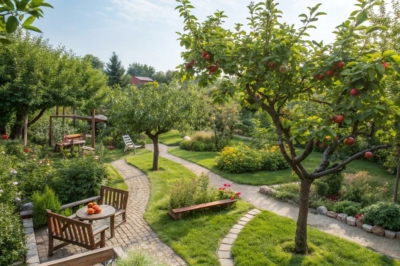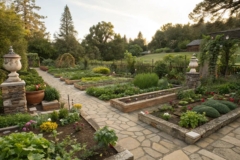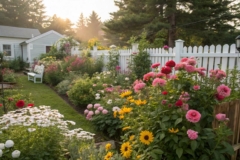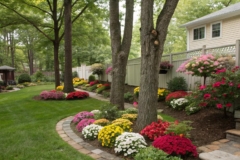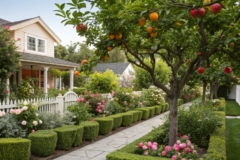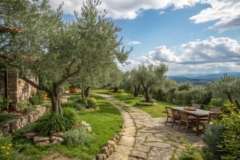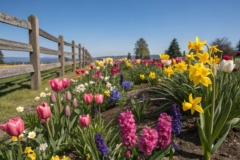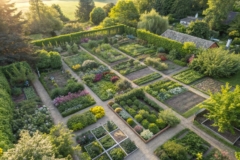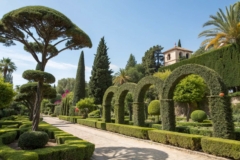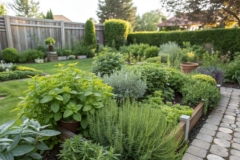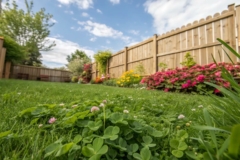1. Seasonal Color Splash
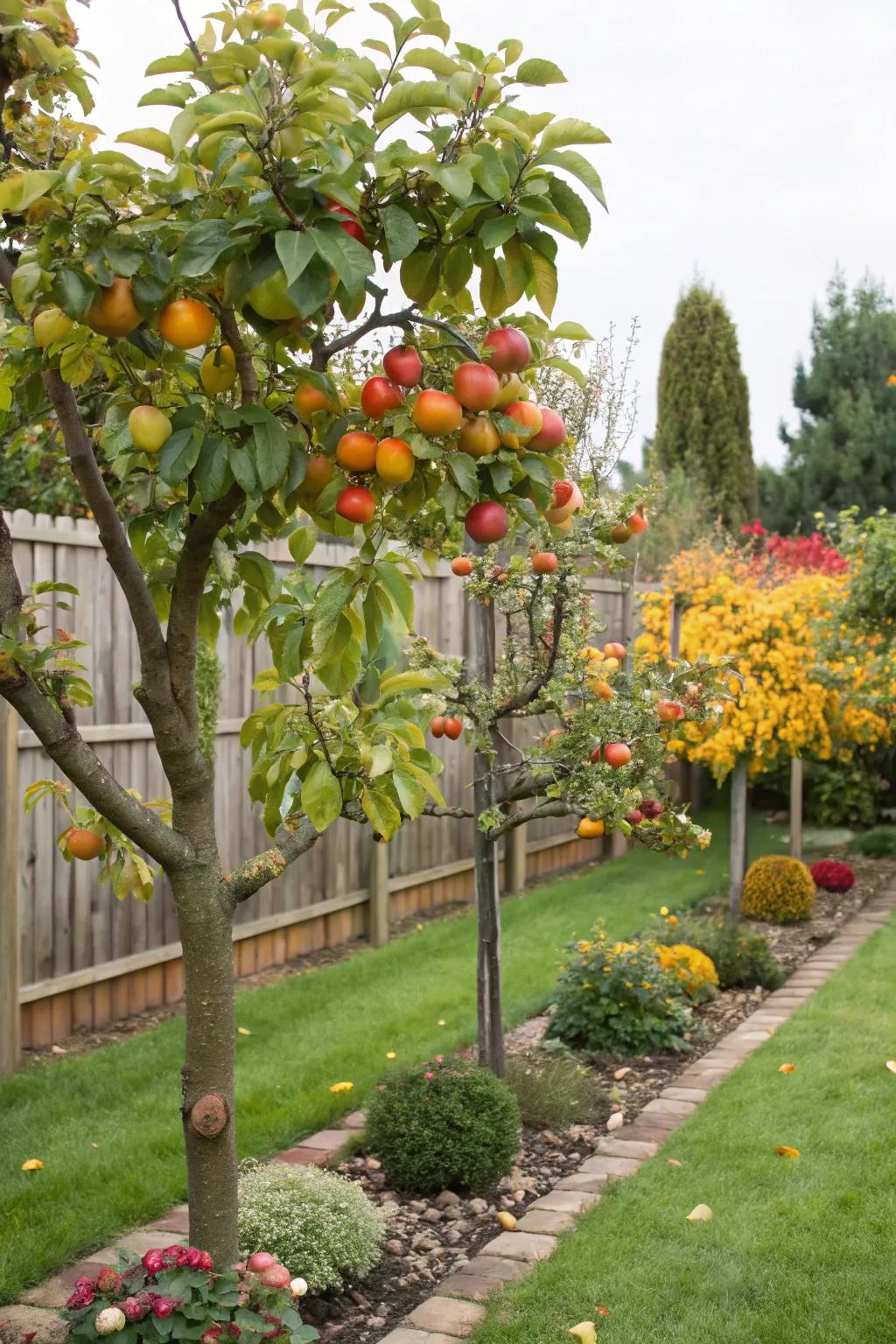
Choose a mix of trees that fruit at different times for year-round color and harvest. In my garden, this keeps things exciting every season!
A few relevant products:
- Fruit Tree Planting Kit: Enhance your garden’s color and productivity with a comprehensive fruit tree planting kit!
- All-Season Garden Fertilizer: Boost growth and fruiting all year round with an effective all-season garden fertilizer.
- Colorful Fruit Tree Variety Pack: Diversify your harvest with a vibrant mix of fruit trees for eye-catching seasonal changes.
2. Pathways and Rows for Order
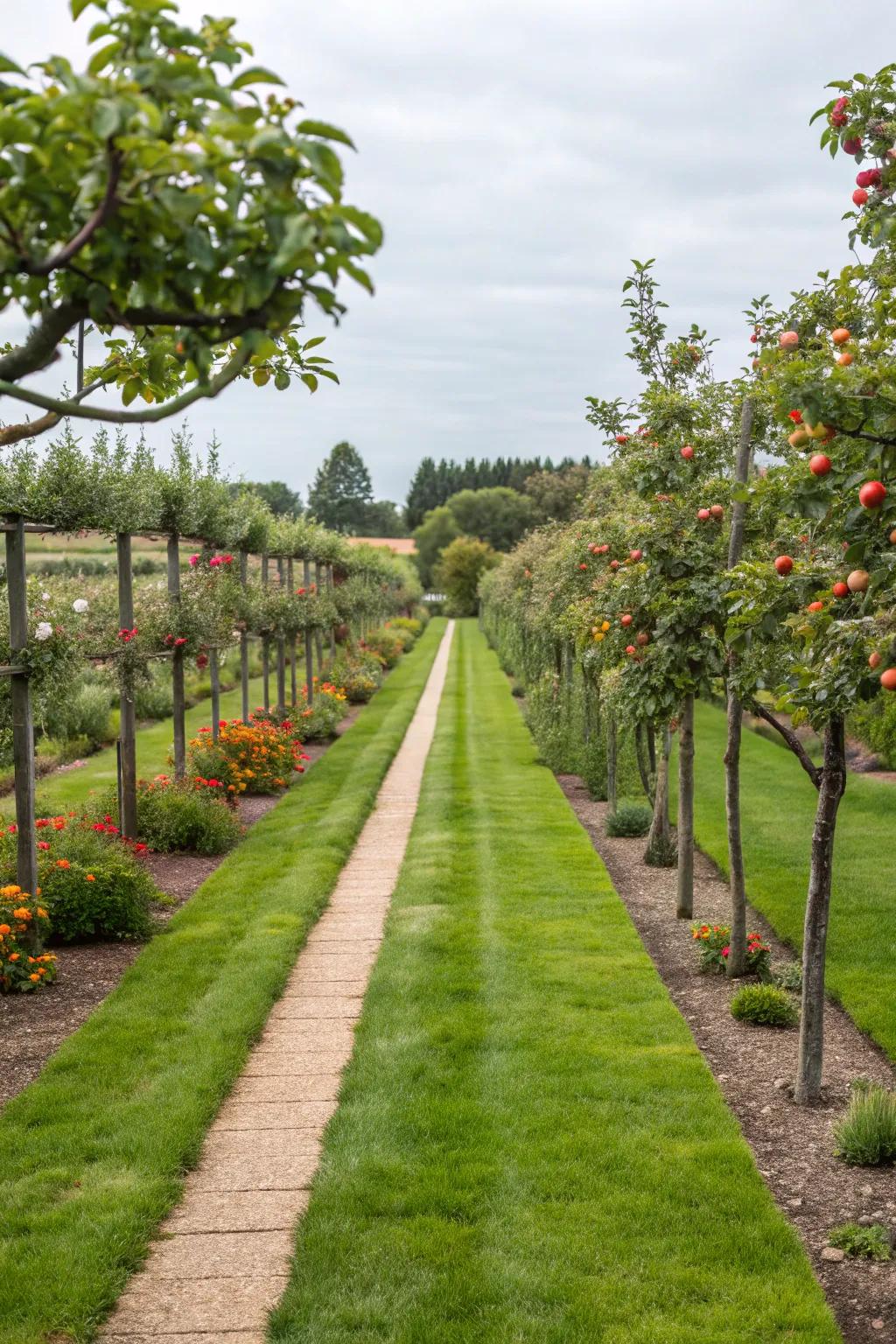
Laying out your fruit trees in neat rows with pathways in between not only looks charming but also makes maintenance a breeze. I’ve found this especially handy for keeping those pesky weeds at bay!
Items that may come in handy:
- Garden Pathway Edging Stones: Define tidy pathways with robust edging stones, enhancing beauty and easing maintenance in your garden.
- Weed Barrier Fabric Roll: Prevent weeds along pathways with durable fabric, ensuring a pristine and low-maintenance garden layout.
- Adjustable Garden Sprinkler System: Efficiently water pathways and rows with an adjustable sprinkler, promoting healthy growth throughout your garden.
3. Mixing Edible with Beautiful
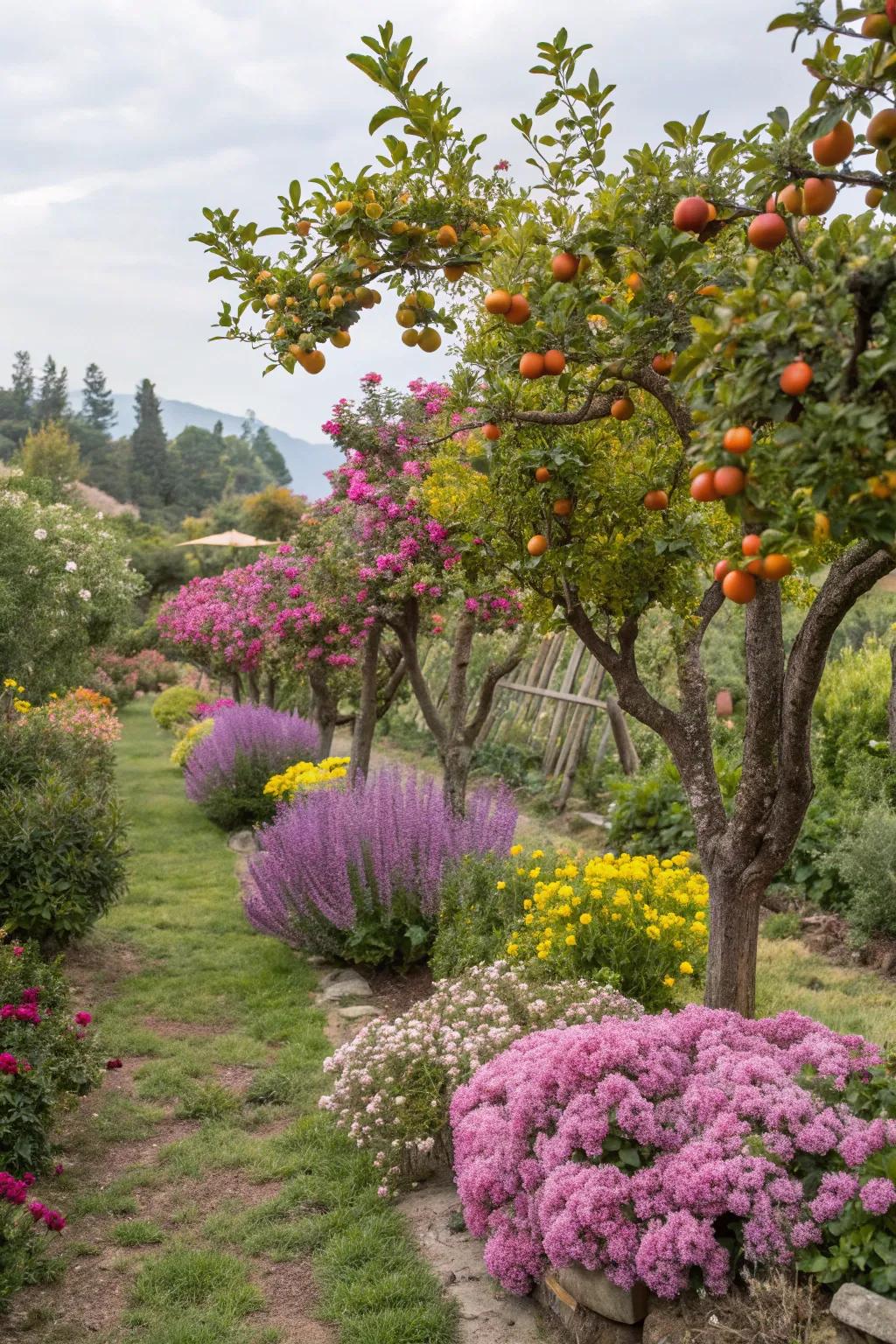
Create an edible landscape by blending fruit trees with flowering plants. It’s a feast for the eyes and the stomach, as my guests often tell me!
These products might help:
- Fruit Tree Fertilizer: Boost your fruit trees’ growth and fruit production with this effective, easy-to-apply fertilizer.
- Flower Garden Seeds Mix: Enhance your garden’s beauty with a colorful mix of vibrant flowering plants and seeds.
- Garden Pruning Shears: Keep your fruit trees and flowers healthy with these durable, sharp pruning shears.
4. Microclimate Magic
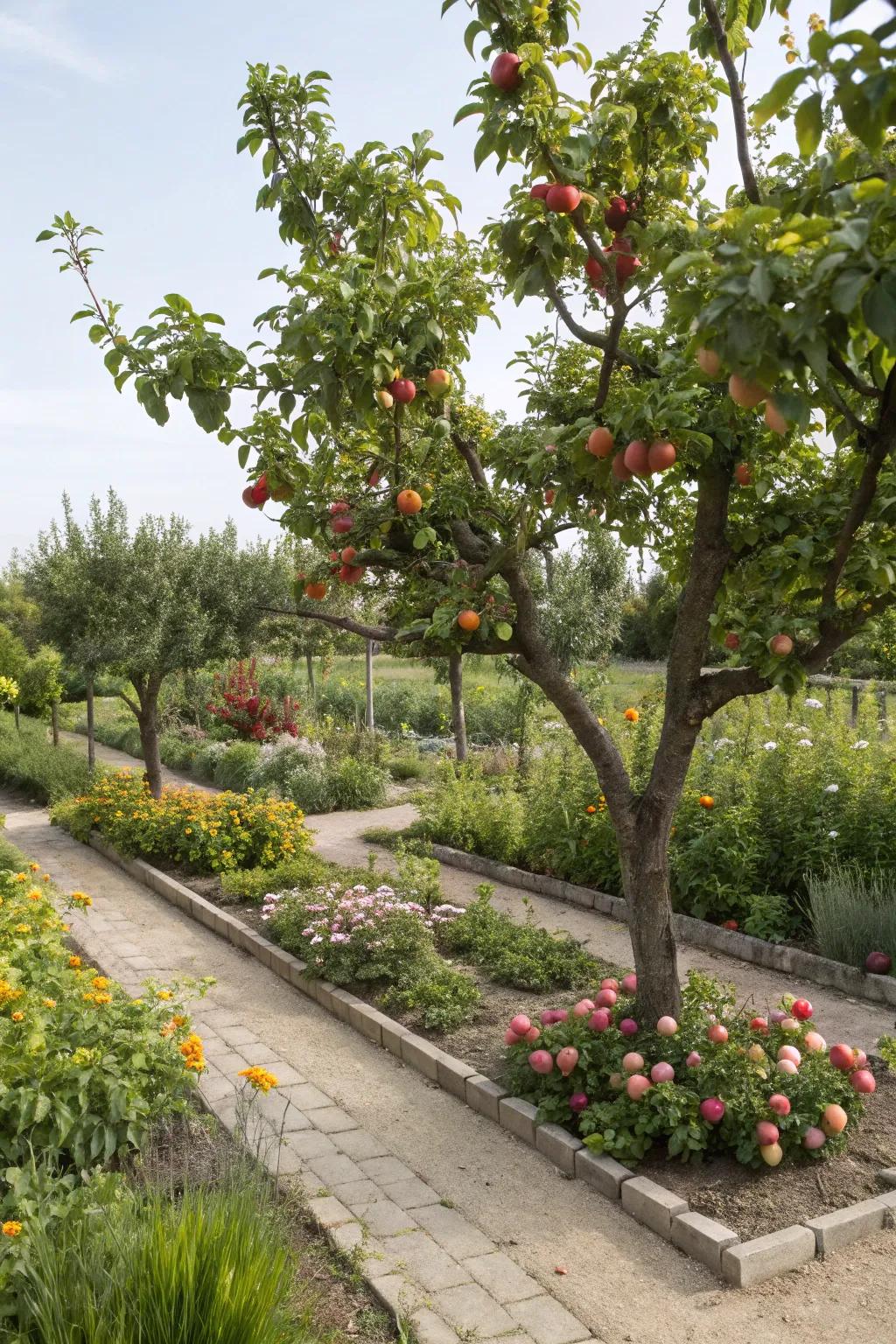
Utilize your garden’s microclimates by planting sun-loving trees in warm spots and shade-tolerant ones in cooler areas. This approach has kept my garden productive year-round.
Useful items to consider:
- Fruit Tree Planting Guide: Discover how to position fruit trees perfectly for optimal growth leveraging your garden’s microclimates.
- Garden Shade Cloth: Protect shade-tolerant trees with this versatile cloth and manage your garden’s microclimate effectively.
- Soil Thermometer: Ensure precise planting by monitoring soil temperature and crafting ideal conditions for sun-loving trees.
5. Stepped Planting for Space
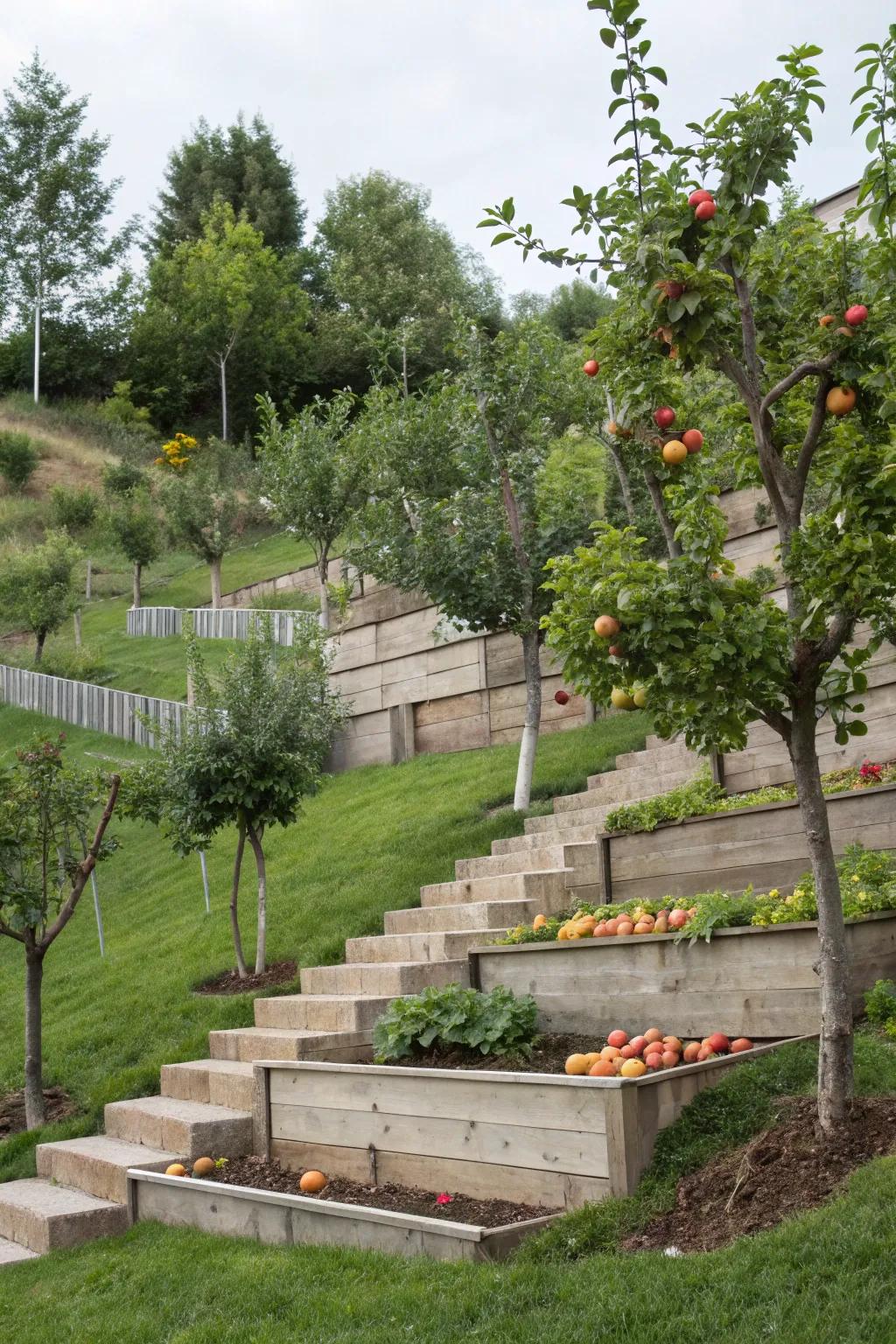
Arrange fruit trees in a stepped layout, with taller trees at the back and shorter ones at the front. This clever trick maximizes light and space, just like in my garden.
Check these products out:
- Raised Garden Bed Kit: Maximize your garden space with sturdy raised beds. Perfect for tiered fruit tree planting.
- Pruning Shears: Keep your fruit trees healthy and well-maintained with precise, easy-to-use pruning shears.
- Organic Fruit Tree Fertilizer: Boost your fruit tree growth with this eco-friendly, nutrient-rich fertilizer. Ideal for stepped gardens.
6. Raised Beds for Better Growth
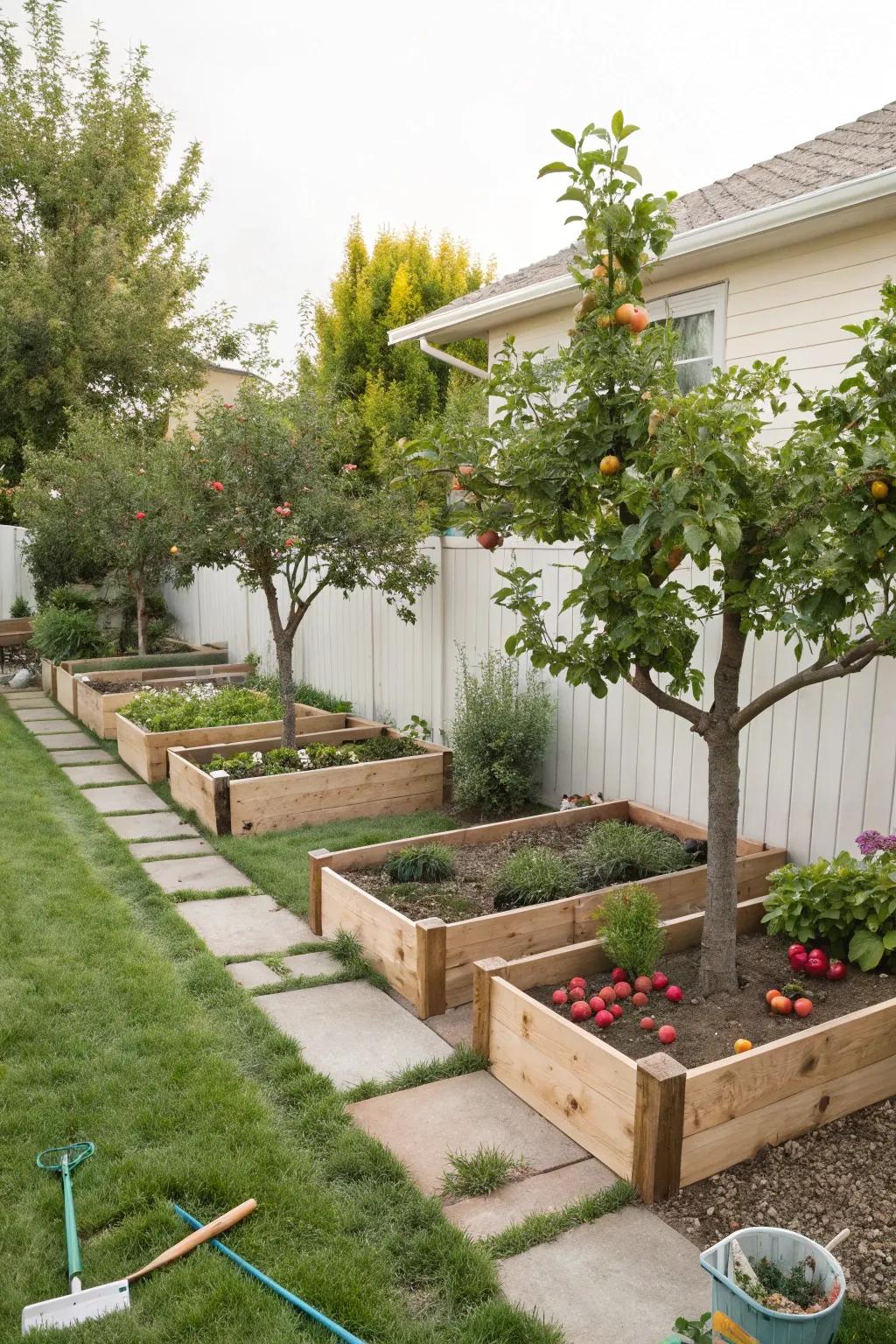
Use raised beds to give your fruit trees a boost in less-than-perfect soil conditions. My apple trees have thrived since making this change.
A few choices to try:
- Wooden Raised Garden Bed Kit: Enhance your fruit trees’ growth with easy-to-install, durable wood raised garden bed kits.
- Garden Soil Mix for Raised Beds: Optimize your raised beds with nutrient-rich garden soil mix designed for fruit tree vitality.
- Drip Irrigation Kit for Raised Beds: Install a drip irrigation kit to ensure efficient watering for healthier, thriving fruit trees.
7. Ornamental Structures with a Purpose
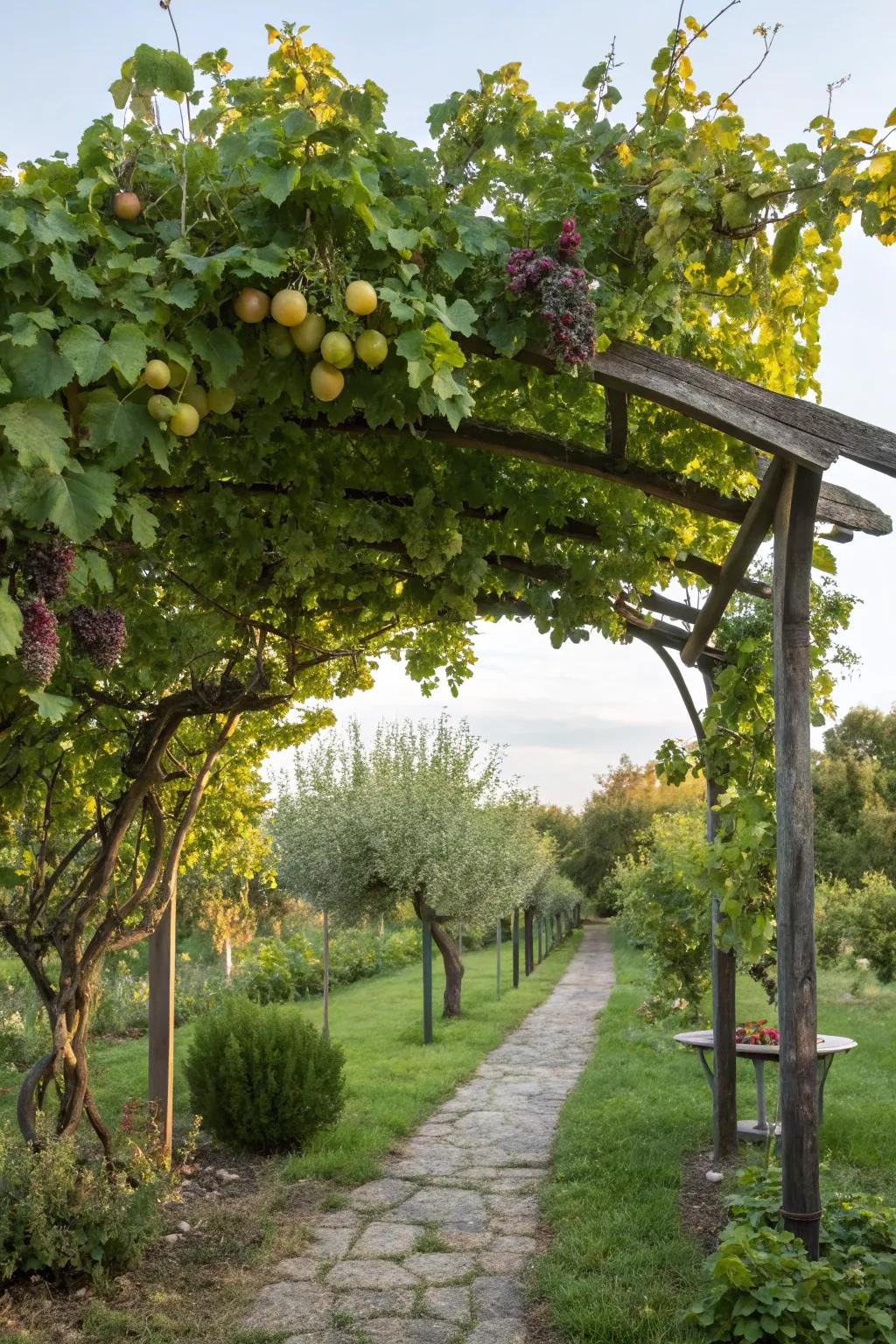
Add an arbor or trellis to support climbing fruits like grapes or kiwis. It’s a stunning way to add height and intrigue to your garden, something I adore in mine!
May just do the trick:
- Garden Arbor for Climbing Plants: Elevate your garden with this arbor, perfect for supporting beautiful grapes and kiwis.
- Wooden Trellis for Vine Support: Enhance your garden’s aesthetics with a sturdy trellis for your climbing fruits.
- Outdoor Pergola Kit: Transform your garden walkway with this pergola kit, ideal for luscious climbing fruits.
8. Fruitful Fences
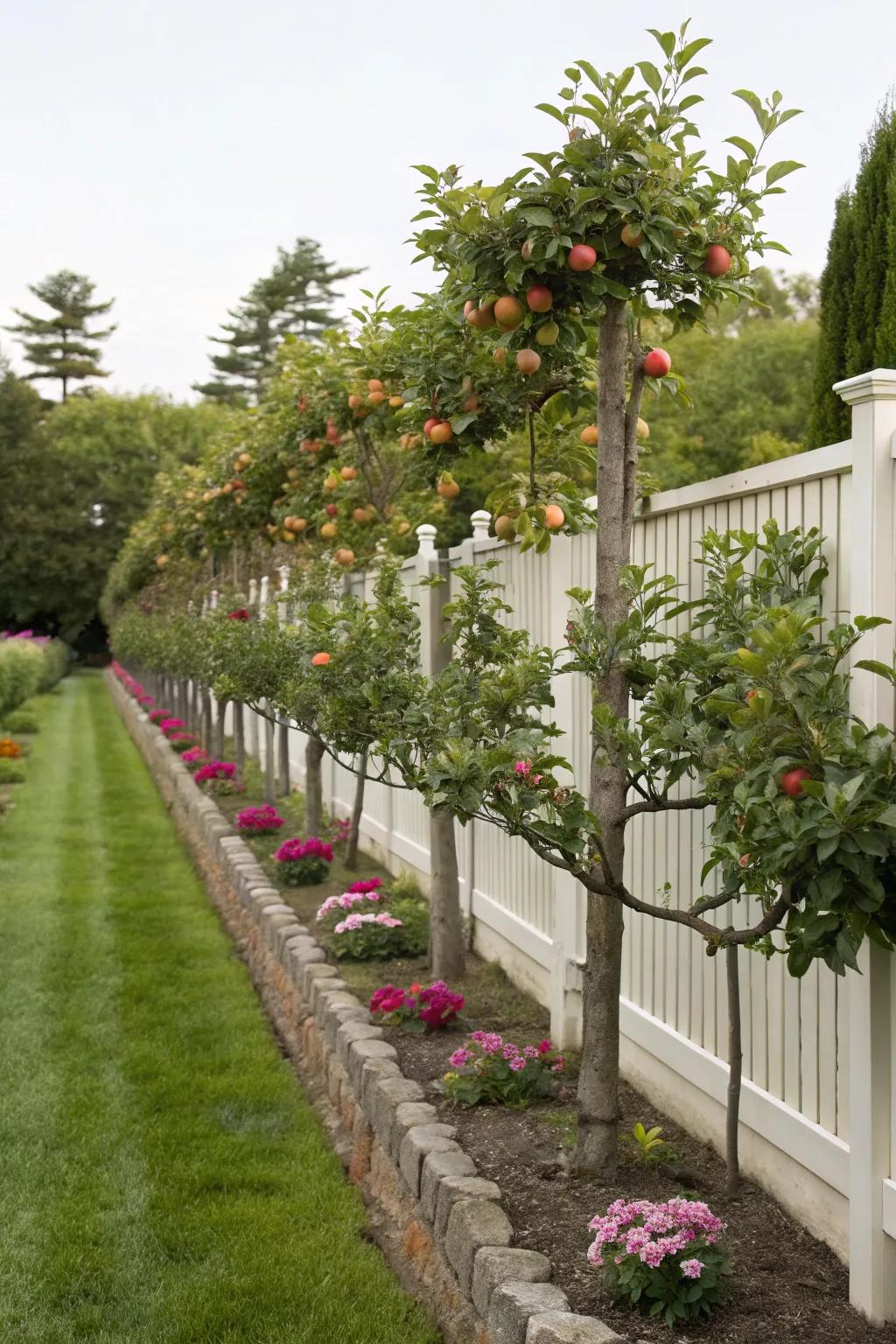
Transform fences into productive spaces by training fruit trees to grow along them. It’s a boundary line that bears fruit, literally!
Check if these fit your needs:
- Espalier Fruit Tree Kit: Train your fruit trees effortlessly along fences and maximize your garden’s productive space.
- Garden Fence Support Wires: Support your growing fruit trees with durable wires designed for outdoor use.
- Pruning Shears for Fruit Trees: Keep your fruit trees healthy and productive with these precision pruning shears.
9. Companion Planting Perfection
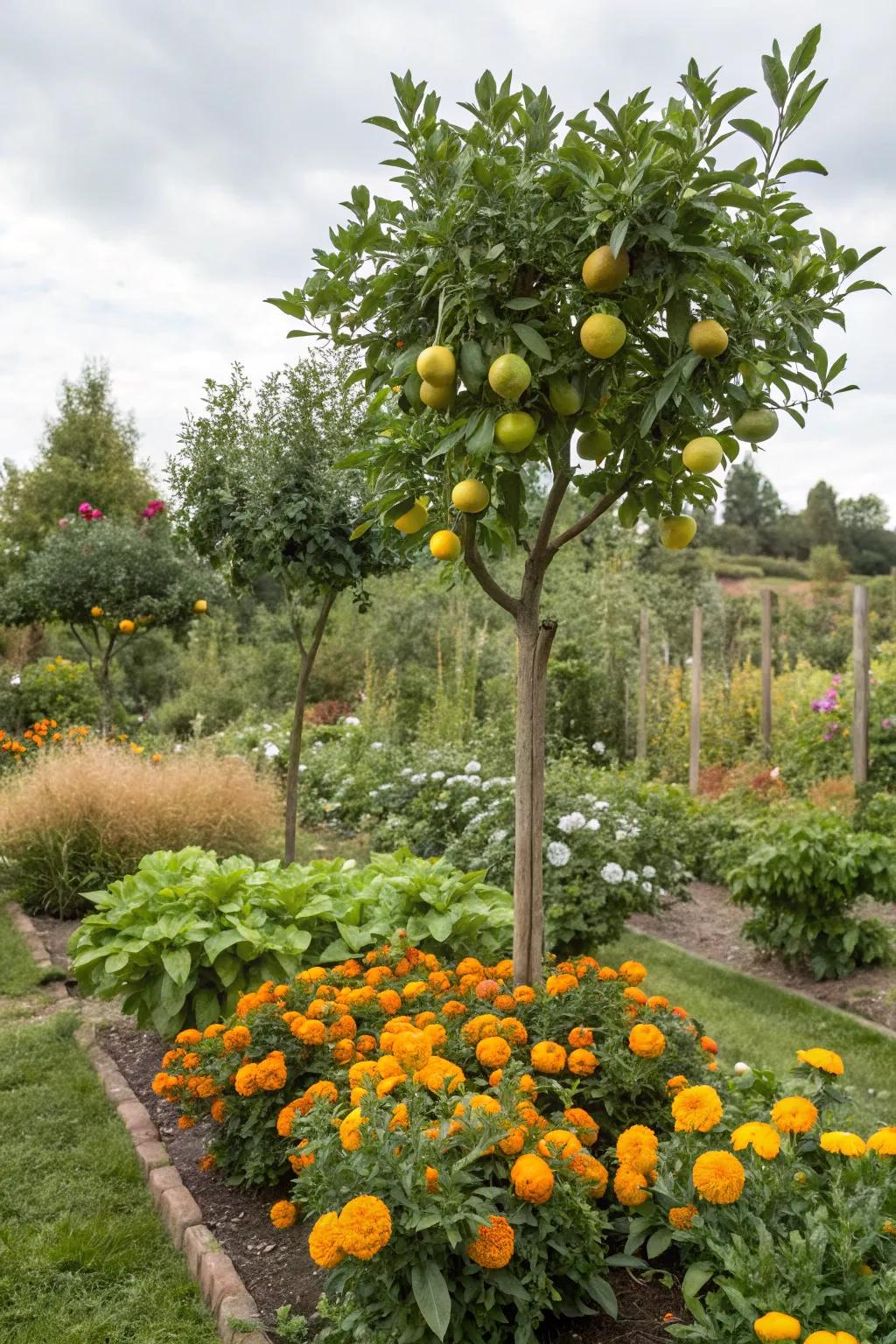
Pair your fruit trees with friendly companions like marigolds or basil to boost growth and keep pests away. In my garden, this mix has brought more color and fewer bugs.
A few helpful options:
- Organic Marigold Flower Seeds: Plant organic marigold seeds to add natural pest control and vibrant color to your garden.
- Basil Herb Seeds for Planting: Grow basil among your fruit trees to boost health and enhance garden fragrance.
- Garden Pest Control Spray: Use a natural pest control spray to keep your companion plants and fruit trees thriving.
10. Dwarf Varieties for Small Spaces
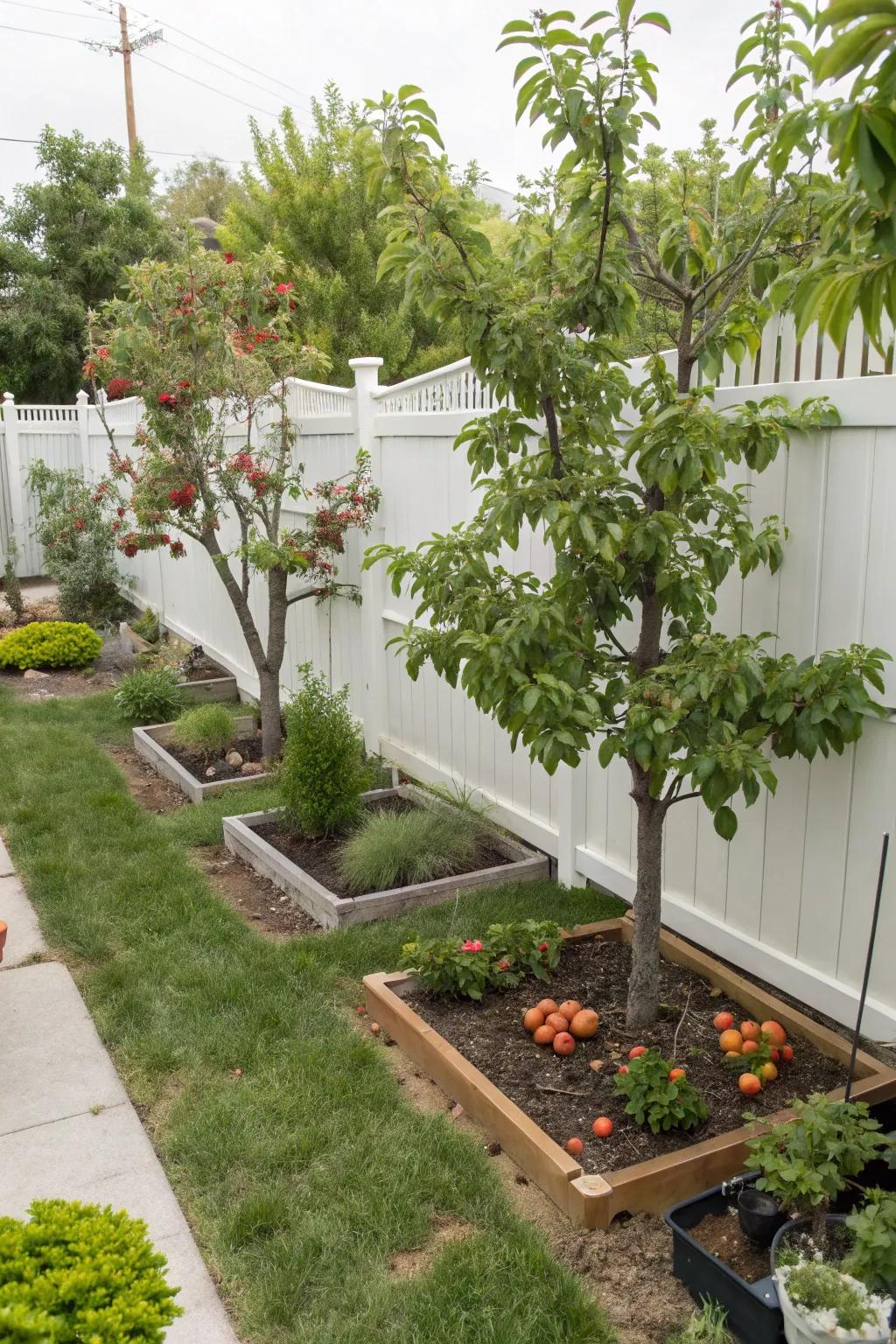
Opt for dwarf fruit tree varieties if space is a concern. They’re small but mighty, just like the ones thriving in my compact garden corner.
You might give these a try:
- Dwarf Fruit Tree Starter Kit: Jumpstart your small garden with a dwarf fruit tree starter kit, perfect for limited spaces.
- Smart Drip Irrigation System: Ensure your dwarf trees thrive with a smart drip irrigation system designed for compact gardens.
- Organic Fruit Tree Fertilizer: Boost growth in dwarf fruit trees with this organic fertilizer that suits small garden setups.
11. Charming Seating Nooks

Nestle a cozy seating area amidst your fruit trees to relax and enjoy the fruits of your labor. It’s my favorite spot to unwind with a book and a cup of tea.
Some ideas to consider:
- Outdoor Wooden Bench: Enhance your garden nook with a rustic bench for relaxing moments among the fruit trees.
- Cozy Outdoor Cushions: Add comfort to your seating area with weather-resistant cushions for a snug reading spot.
- Beautiful Patio Side Table: Complete your garden nook with a stylish side table for your tea and favorite book.
12. Container Flexibility

If space is tight, grow fruit trees in containers that you can move around. I love experimenting with different locations for my potted lemon tree.
A few suggestions:
- Large Rolling Garden Planter: Easily move your fruit trees for optimal sunlight with this durable rolling garden planter.
- Self-Watering Plant Pots: Keep your fruit trees hydrated with these convenient self-watering pots, perfect for busy gardeners.
- Weatherproof Plant Dolly: Effortlessly rearrange your container garden using this sturdy, weatherproof plant dolly.
13. Mulching for Moisture
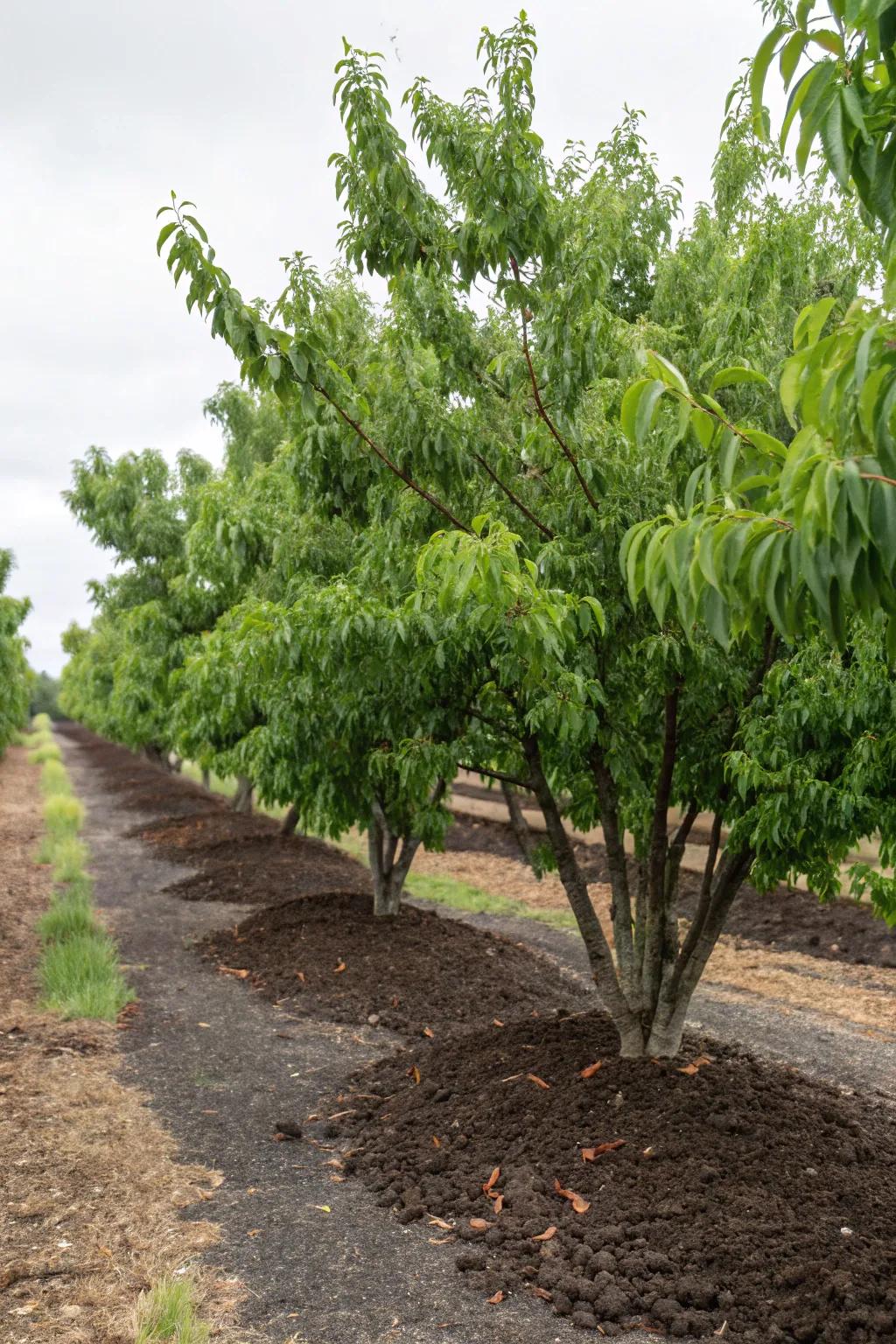
Keep moisture in and weeds out by applying a thick layer of mulch around your fruit trees. This simple trick has saved me countless watering hours.
Some handy options:
- Organic Garden Mulch: Enhance moisture retention in your garden with eco-friendly organic mulch. Perfect for fruit trees!
- Mulching Fabric Roll: Prevent weeds and maintain soil moisture with this durable mulching fabric. Easy to apply.
- Garden Mulch Spreader: Simplify mulch application with this handy spreader. Save time and effort in your garden!
14. Espalier Elegance
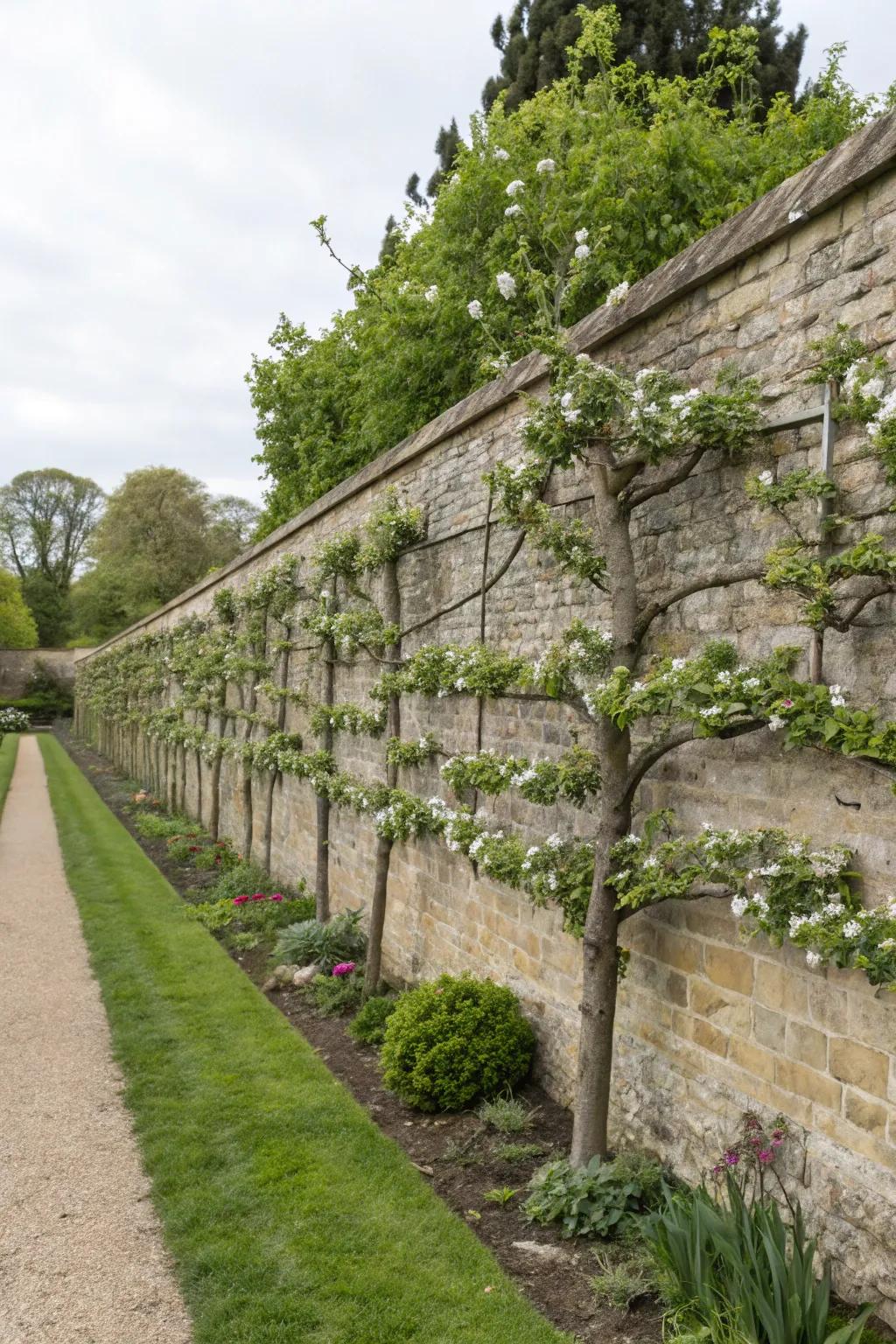
Try espaliering your fruit trees against a wall or fence to save space and add a decorative touch. It’s an art form I’ve grown to love.
A few things you might like:
- Espalier Training Kit: Create stunning designs with ease using this espalier training kit for your fruit trees.
- Wall-Mounted Trellis: Enhance your garden’s beauty with a wall-mounted trellis perfect for espaliering fruit trees.
- Garden Pruning Shears: Maintain your espaliered trees effortlessly with sharp pruning shears designed for precision cuts.
